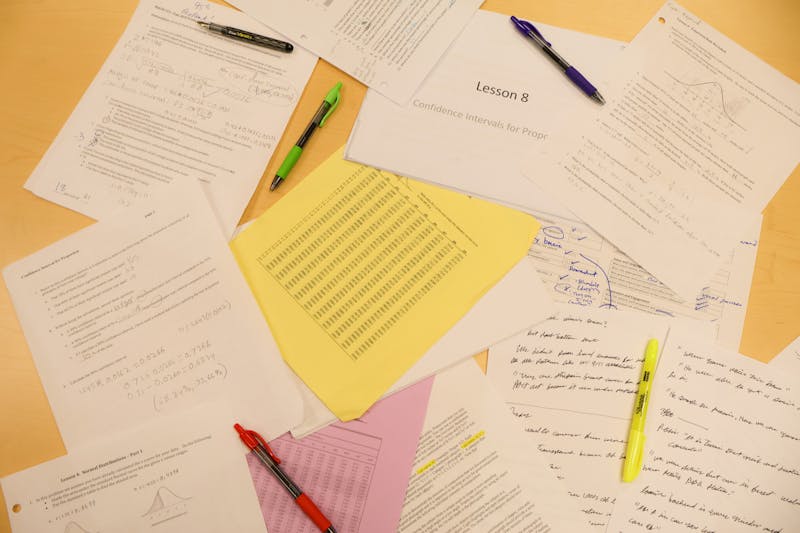Being vegan is often seen as infeasible and impractical, as vegans “don’t get enough protein,” are “hippies” and are “pretentious” as a result of their animal activism.
The stigma surrounding those who do not use or eat animal products — especially that they are holier-than-thou — dissuades people. Veganism is daunting too as one has to check ingredients lists, clothing tags and hope the dining hall has something for them.
But being a vegan has many, many benefits for both the body, animals and environment. According to PETA’s website, every vegan helps to save 200 animal lives per year. Some vegans are very concerned with animal rights and the cruelty animals face due to industrial agriculture.
Not only is industrial agriculture quite inhumane in many cases, but it also causes numerous environmental problems. Methane from cows contributes heavily to global warming as it increases greenhouse gas emissions. The Human League pointed out that pig and chicken factories increase air pollution and water pollution through fecal matter and other bodily functions. Animals also require a lot of water; 1,000 gallons are required for a gallon of milk and 2,500 gallons are needed to produce only one pound of beef.
If you are not incredibly concerned with animal rights, becoming a vegan is something that your body may thank you for too. Being vegan turns your focus more to fruits, vegetables and truly natural foods. Cutting out milk and cheese and increasing antioxidants is great for your skin. Vegans also have a lower risk for heart disease because animal products contain more ‘bad cholesterol’ than plant-based alternatives.
Veganism is actually far easier than one may think. A few years ago, it might have been a different story, but vegan substitutes are now more available and even more delicious.
For the last month or so, I have been vegan for a biology project. I had been interested in being vegan for a while, and as a pescatarian, it seemed like an easy jump.
I learned to survive on my new diet by consulting friends and family members. The top tips I received were to take my vitamins, make meals satisfying and filling, limit other food restrictions, plan my meals and gradually increase my fiber intake.
Taking vitamins and making my own, satisfying meals were the two lessons that proved to be most useful to me. My biggest concern was how hungry I would be and if my energy levels would dip, but it turned out that many of my favorite meals could easily be made vegan. With oat milk, vegan butter and a genuine love of vegetables, the switch was much less of a change than I initially thought. There are far more options around than one may think.
My meals were fairly simple things I could make in my dorm room. I made overnight oats at the beginning of the week and ate them for breakfast every day. Lunch was some type of salad with spring mix, nuts and fruits. There were points where I wondered how far my diet was from a bird’s. As I got into the swing of things, I started to get more confident and creative in my recipes. I would highly recommend Halle Burns’ quick, easy vegan substitutes. Burns even has a recipe for vegan tuna made from watermelon.
My biggest struggles were feeling hungry at the start and trying to find vegan foods I might like, but like any lifestyle change, it is a journey. In the end, being a vegan felt natural to me. Though I am not 100% vegan anymore, due to my brie cheese habit, I still look for what I can switch out to have a largely vegan diet. I still do not eat meat and I only use vegan butter and oat milk.
Being “kind of vegan” like this helps the environment more than simply doing nothing. Cutting out red meat and using only milk substitutes is a great, easy place to begin. If you’re looking to make the switch, keep in mind that it takes 21 days to build a habit. “Vegan” is a scary word, but in practice it is much easier than I previously thought.


The Slate welcomes thoughtful discussion on all of our stories, but please keep comments civil and on-topic. Read our full guidelines here.